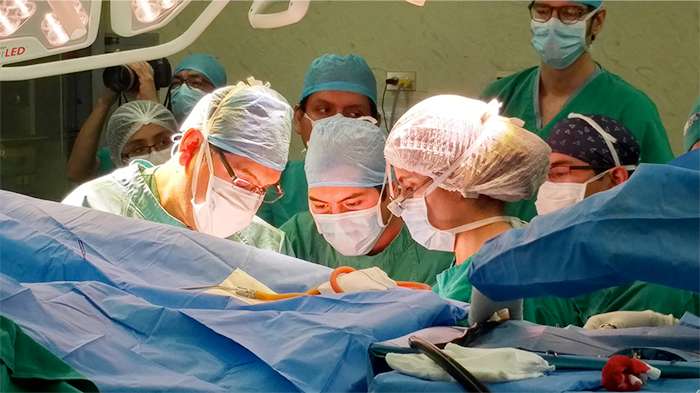Surgical options providing lasting, positive change in Peru

One surgery can change the life of a person living with epilepsy. It can mean the difference between daily seizures and none at all. In Canada, approximately 200 epilepsy surgeries are performed every year, but before 2011, it wasn't an option at all in Peru, a country whose epilepsy rates are three times higher than Canada's.
When the International League Against Epilepsy initiated a program called 'Partnering Epilepsy Centres in the Americas' looking for doctors with formal training in epilepsy to pair with an epilepsy program in Latin America, Dr. Jorge Burneo, a neurologist and professor at the Schulich School of Medicine & Dentistry, put his name in the hat in an effort to improve the lives of epilepsy patients in his home country.
Burneo said epilepsy rates are that much higher in Latin America because of a lack of access to proper perinatal care and brain infection caused by poor sanitation.
"I wanted to be able to give something back to my native country," he said. "I thought it would be great to be able to contribute my knowledge and expertise, and to share what I'm already passionate about."
A little more than five years ago, Burneo and his colleague, Dr. David Steven, a neurosurgeon and professor at Schulich, began making trips to Lima, Peru, to help set up the first epilepsy surgery program in the country.
Epilepsy surgery is an operation on the brain to control seizures and improve the person's quality of life. There are four main types of epilepsy surgery – surgery to place electrodes inside the skull in order to determine where the seizures are originating; surgery to remove the area of the brain producing seizures; surgery to interrupt the nerve pathways through which seizure impulses spread within the brain and surgery to place devices that can deliver electric impulses to the brain to help control seizures.
"The point was to have a sustainable process," said Steven. "The way we are approaching this is we want to have a lasting impact, so we can develop a local program that is independent. That way, they can make their own mistakes and have their own successes."
The idea wasn't to fly in with all their equipment and expertise, perform the surgeries and then leave, he said. Instead, the team wanted to create a program that could function on its own and also be in a position to train the next wave of young neurosurgeons to manage the program for generations to come.
To do this, Burneo and Steven have made yearly visits to Peru to train local doctors on the surgery using the equipment available to them in their local hospitals. The neurosurgeons and neurologists in Peru have also travelled abroad for further training, and the Canadian and Peruvian doctors maintain contact through Skype, email and phone calls.
"We are really proud to say they have two established epilepsy surgery programs that are performing many cases and publishing papers. Residents are also being exposed to the surgery, and they've got some momentum now," said Steven.
The very first patient who the team in Peru operated on, more than six years ago, remains seizure-free today. They have since performed the surgery on more than 60 other patients.
Steven and Burneo were in Peru in November. On this trip, they brought along anesthesiologist, Dr. Miguel Arango, a professor in the Department of Anesthesia and Perioperative Medicine, to assist in mentoring the Peruvian team on performing an awake craniotomy. This surgery involves keeping the patient awake as the surgeons operate on their brain. By keeping the patient conscious, they can determine if they are able to remove an epilepsy-causing lesion without disrupting vital functions, like movement and language.
As they wrap-up their work in Peru, and are ready to hand over the reins to the team there, Steven and Burneo are reflecting on the impact they've had.
"At first, I looked at this as something interesting to do," said Steven. "Now, I can look back and realize that we've really accomplished something remarkable. We've actually permanently changed the management of epilepsy in the country."















